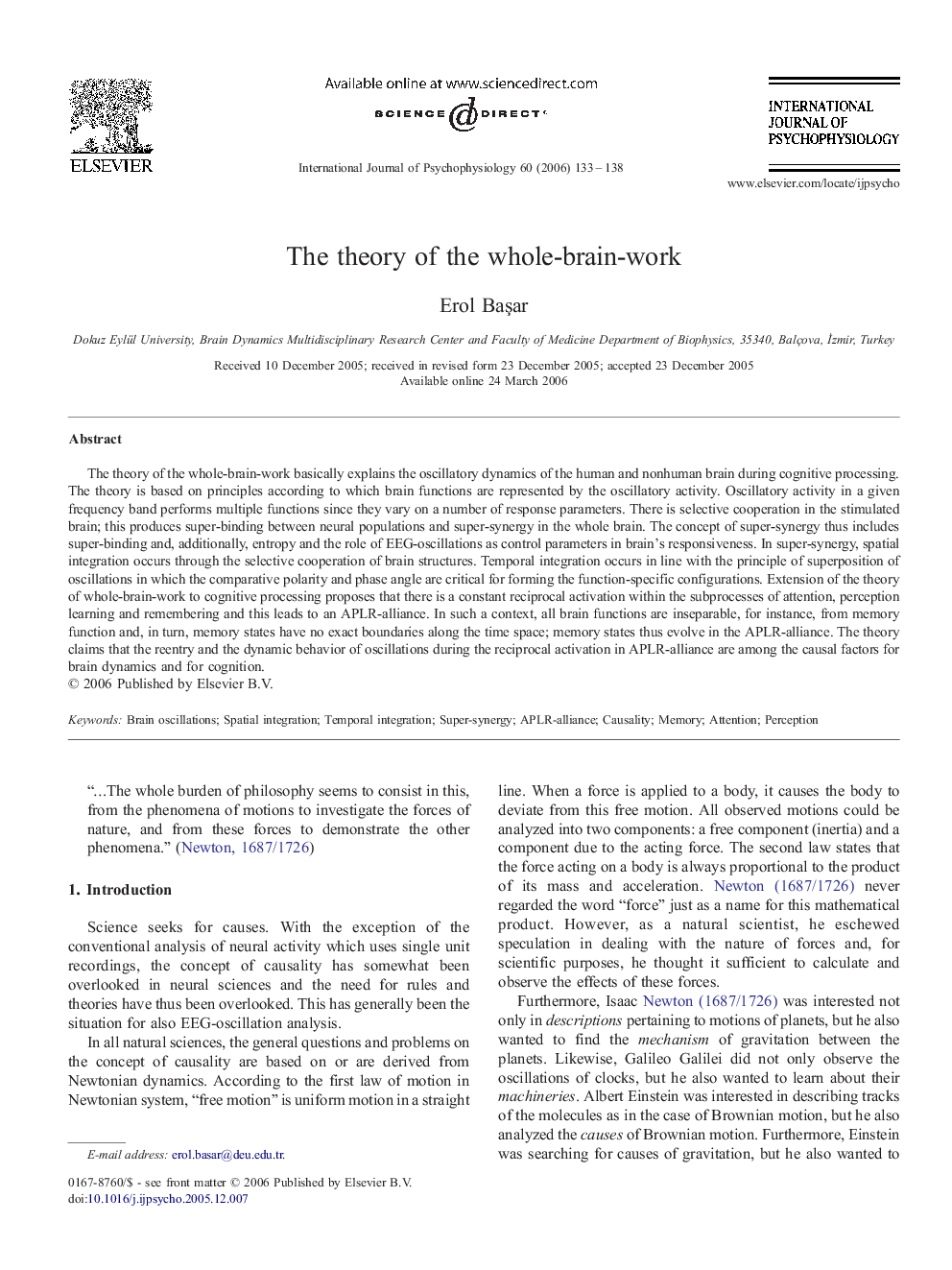| Article ID | Journal | Published Year | Pages | File Type |
|---|---|---|---|---|
| 930990 | International Journal of Psychophysiology | 2006 | 6 Pages |
The theory of the whole-brain-work basically explains the oscillatory dynamics of the human and nonhuman brain during cognitive processing. The theory is based on principles according to which brain functions are represented by the oscillatory activity. Oscillatory activity in a given frequency band performs multiple functions since they vary on a number of response parameters. There is selective cooperation in the stimulated brain; this produces super-binding between neural populations and super-synergy in the whole brain. The concept of super-synergy thus includes super-binding and, additionally, entropy and the role of EEG-oscillations as control parameters in brain's responsiveness. In super-synergy, spatial integration occurs through the selective cooperation of brain structures. Temporal integration occurs in line with the principle of superposition of oscillations in which the comparative polarity and phase angle are critical for forming the function-specific configurations. Extension of the theory of whole-brain-work to cognitive processing proposes that there is a constant reciprocal activation within the subprocesses of attention, perception learning and remembering and this leads to an APLR-alliance. In such a context, all brain functions are inseparable, for instance, from memory function and, in turn, memory states have no exact boundaries along the time space; memory states thus evolve in the APLR-alliance. The theory claims that the reentry and the dynamic behavior of oscillations during the reciprocal activation in APLR-alliance are among the causal factors for brain dynamics and for cognition.
